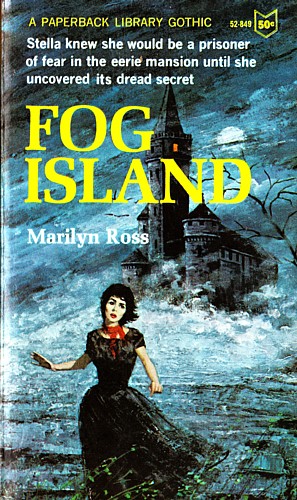Any fan of Howard Philips Lovecraft knows how difficult it is to translate his novels and short stories of unspeakable cosmic horror into film. The experience of reading Lovecraft is about the writing itself, and while it invokes highly visual imagery, it is not the sort of thing which lends itself well to cinematic adaptation.
1967’s The Shuttered Room comes from a Lovecraft idea completed as a short story after his death by friend and colleague August Derlith. Like many of Lovecraft’s lesser short stories, there isn’t much of a plot. The only things to make the transition from page to film are the setting of the abandoned mill house and the family name. While screenwriters D.B. Ledrov and Nathaniel Tanchuck took the bare bones of the short story and created a boilerplate gothic melodrama, the script and direction managed to get the feel of the cursed Whately clan and the fishing village of Dunwich
When Susanna Whately (babelious blond model Carol Lynley) inherits the family property on her twenty-first birthday, she and her husband (the much older Gig Young) Mike Kelton, travel from New York City to secluded Dunwich island somewhere off the coast of New England. Right away the superstitious villagers warn them away from turning the dilapidated old mill into a summer home because Something Evil lurks in the shadows ready to main, torture, and kill.
Speaking of torture, Oliver Reed is on hand as Ethan Whately, Susanna’s cousin and leader of the local gang of island thugs who spends most of the movie stalking Susanna, engaging in dangerous road games with his homies that involve a wooden skid and a barbed wire fence, and getting his ass kicked by Judo expert Mike Kelton. To top things off there is Flora Robson as Aunt Agatha, a sort of granny good witch who observes the pathetic lives of the islanders from atop her Norman tower.
Anyone who saw this movie during repeated showings on American TV in the late sixties and early seventies remembers it as an exciting gothic thrill ride. Seeing it forty years later the denouement is something of a let down, but it still manages to leave the viewer with a sense of poignancy for the wasted life of the thing in the shuttered room. See the second comment here posted by Evie on August 8, 2008 for a thoughtful assessment on how the same story might be presented today.
The Shuttered Room is the kind of film that makes Lovecraft purists throw up their hands in despair, but taken on its own terms it is an effective piece of late 60s British Gothic film making. Heck, there was even a novelization that was marketed to the ravenous Gothic Romance crowd.
















